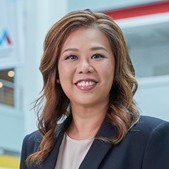In an era when job-hopping has become the norm and employee loyalty seems increasingly elusive, the Singapore Institute of Management (SIM) is quietly defying the trend. With 35% of its employees having stayed for more than a decade—and nearly 10% being alumni—this private education institute is showing that with the right culture, development opportunities and shared purpose, retention can be more than an HR metric but a way of life.
“People want to do meaningful and purposeful work, which is recognized and rewarded,” Sara Yik, chief human capital officer at the institute, told HRM Asia. “People join—and stay with—SIM because they resonate with our purpose.”
‘Learn for life, thrive for life’
That purpose is deeply embedded in the institution’s DNA. With a $60 million (Singapore dollars) SIM Impact Fund supporting bursaries, scholarships and other initiatives that make education more accessible, employees see their work translate directly into lives changed.
“Our goal is for our learners to ‘learn for life, thrive for life,’ ” Yik said. “They see our students graduate and go on to have successful jobs and careers and take pride in truly making a difference to thousands of people over the 60 years of SIM’s history.”
While Yik is quick to say that loyalty cannot be designed in a prescriptive way, she believes it can be cultivated. “We focus on building a culture where employees feel seen, supported, empowered, and valued,” she said. This includes everything from psychological safety and social capital to clear role expectations and performance-linked rewards.
See also: Disengaged employees’ high cost: Why culture matters more than ever
Each role at this institute, which has a workforce of about 800 employees, is defined by a clear “value add”—a shift from activity-based KPIs to outcome-driven contributions. And when it comes to recognition, the institute recognizes achievements well before annual reviews. Contributions are acknowledged regularly across platforms such as town halls and Core Value Awards, reinforcing the link between behavior, values and impact.
New hires, meanwhile, embark on a structured journey beginning with an interactive orientation program and are invited to tea sessions with the president and CEO within their first six months. “It allows newcomers to get to know the leadership in a more natural setting,” said Yik.
Building a culture in a hybrid world

In today’s hybrid and dispersed workplaces, culture can often feel diluted. Not so at the institute.
“We believe that a strong and cohesive culture is built through consistent and intentional practices,” Yik said.
One such anchor? The organization’s refreshed Core Values—Act with Integrity, Respect for the Individual, Be Learner-Centred, Collaborate, and Continuously Learn and Innovate—which were developed with extensive employee input and are integrated into daily operations and performance appraisals. “All new hires attend a Core Values workshop to understand our Core Values and are encouraged to live them in daily work behaviours and practices,” she said.
The institute also takes employee feedback seriously. Annual engagement surveys are followed by visible action. In 2024, this led to 20 team-level action plans and 30 cross-functional initiatives, ranging from technology upgrades and the removal of Saturday shifts to the sponsorship of postgraduate degrees.
Yik added, “Taking visible action on feedback builds trust, which is the foundation of a strong culture.”
To promote belonging, the institute organizes both formal and informal bonding activities—from recreational events and festive celebrations to division-wide team building. This year, the entire workforce headed to Johor Bahru, Malaysia, for an organization-wide retreat. “These events are intentionally designed to promote interaction across generations, genders, ethnicities and departments; to foster greater understanding, inclusivity, and to strengthen employees’ sense of belonging,” she explained.
For organizations struggling with hybrid workforces, Yik’s advice is clear: “Communicate the ‘why’ of management decisions, engage employees by seeking their input, create opportunities for meaningful bonding, and equip managers to lead and develop their teams.”
These practices ensure culture remains vibrant, even when teams are dispersed.
Learning as a strategy for workplace loyalty, not a perk
As a lifelong learning institution, the institute treats employee development as a strategic priority, not just a benefit. Through its Learning@SIM program, the organization invests nearly S$1 million annually in role-based skills development, offering e-learning, seminars, workshops and in-person training. “We are a skills-based organization, where each role has identified core and functional skills,” Yik said.
HR collaborates with business leaders to map current and future skills, ensuring learning aligns with strategic goals.
Read more: Why caring leadership is your next strategic imperative
Career pathways empower employees to take ownership of their development, the organization’s HR leaders believe. Professional Development Plans, discussed with managers, help employees identify and close skill gaps. Access to LinkedIn Learning and curated programs on topics like generative AI, cybersecurity and data protection encourages self-directed learning. SIM also offers a 10% tuition grant for its E-Learning Graduate Certificates in high-demand fields like analytics and HR management, reinforcing its commitment to growth. “Learning@SIM helps maximize and develop our human capital,” Yik said, emphasizing that learning is a driver of organizational success.
Looking ahead, Yik predicts several factors will reshape HR over the next five years: AI, people analytics and the rise of the skills-based workforce.
“AI will automate administrative HR tasks and free up time for strategic work,” she said. “Meanwhile, people analytics will allow HR to use workforce data to provide real-time and predictive insights, helping leaders make better decisions.”
The most significant shift, however, may be the move from role-based to skills-based talent models, she said.
“Hiring, promotion, and workforce development will increasingly focus on skills,” Yik said. “HR must map current versus future skills, identify gaps and design reskilling pathways to keep organizations agile.”
Josephine Tan wrote this story for HRM Asia. Find more from this author at HRMAsia.com.



